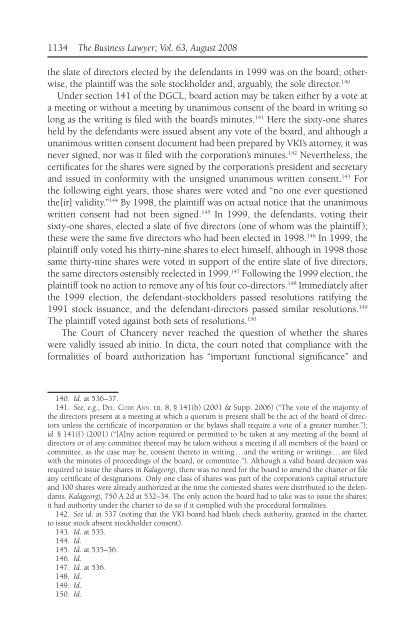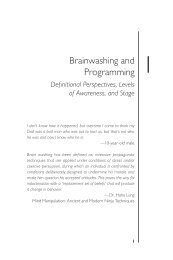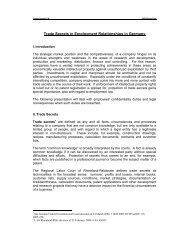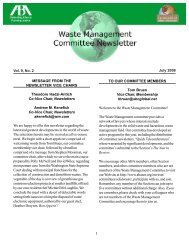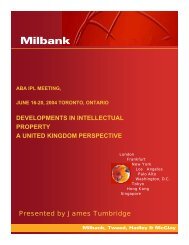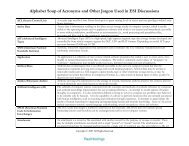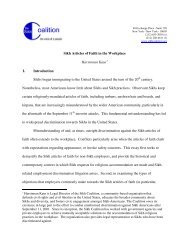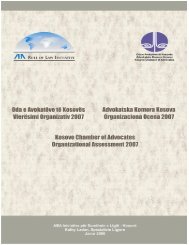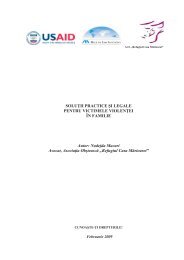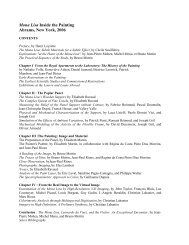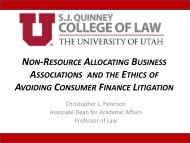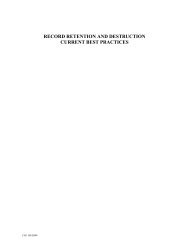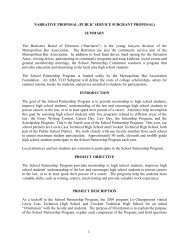Curing Defects in Stock Issuances - American Bar Association
Curing Defects in Stock Issuances - American Bar Association
Curing Defects in Stock Issuances - American Bar Association
You also want an ePaper? Increase the reach of your titles
YUMPU automatically turns print PDFs into web optimized ePapers that Google loves.
1134 The Bus<strong>in</strong>ess Lawyer; Vol. 63, August 2008<br />
the slate of directors elected by the defendants <strong>in</strong> 1999 was on the board; otherwise,<br />
the pla<strong>in</strong>tiff was the sole stockholder and, arguably, the sole director. 140<br />
Under section 141 of the DGCL, board action may be taken either by a vote at<br />
a meet<strong>in</strong>g or without a meet<strong>in</strong>g by unanimous consent of the board <strong>in</strong> writ<strong>in</strong>g so<br />
long as the writ<strong>in</strong>g is fi led with the board’s m<strong>in</strong>utes. 141 Here the sixty-one shares<br />
held by the defendants were issued absent any vote of the board, and although a<br />
unanimous written consent document had been prepared by VKI’s attorney, it was<br />
never signed, nor was it fi led with the corporation’s m<strong>in</strong>utes. 142 Nevertheless, the<br />
certifi cates for the shares were signed by the corporation’s president and secretary<br />
and issued <strong>in</strong> conformity with the unsigned unanimous written consent. 143 For<br />
the follow<strong>in</strong>g eight years, those shares were voted and “no one ever questioned<br />
the[ir] validity.” 144 By 1998, the pla<strong>in</strong>tiff was on actual notice that the unanimous<br />
written consent had not been signed. 145 In 1999, the defendants, vot<strong>in</strong>g their<br />
sixty-one shares, elected a slate of fi ve directors (one of whom was the pla<strong>in</strong>tiff );<br />
these were the same fi ve directors who had been elected <strong>in</strong> 1998. 146 In 1999, the<br />
pla<strong>in</strong>tiff only voted his thirty-n<strong>in</strong>e shares to elect himself, although <strong>in</strong> 1998 those<br />
same thirty-n<strong>in</strong>e shares were voted <strong>in</strong> support of the entire slate of fi ve directors,<br />
the same directors ostensibly reelected <strong>in</strong> 1999. 147 Follow<strong>in</strong>g the 1999 election, the<br />
pla<strong>in</strong>tiff took no action to remove any of his four co-directors. 148 Immediately after<br />
the 1999 election, the defendant-stockholders passed resolutions ratify<strong>in</strong>g the<br />
1991 stock issuance, and the defendant-directors passed similar resolutions. 149<br />
The pla<strong>in</strong>tiff voted aga<strong>in</strong>st both sets of resolutions. 150<br />
The Court of Chancery never reached the question of whether the shares<br />
were validly issued ab <strong>in</strong>itio. In dicta, the court noted that compliance with the<br />
formalities of board authorization has “important functional signifi cance” and<br />
140. Id. at 536 –37.<br />
141. See, e.g., DEL. CODE ANN. tit. 8, § 141(b) (2001 & Supp. 2006) (“The vote of the majority of<br />
the directors present at a meet<strong>in</strong>g at which a quorum is present shall be the act of the board of directors<br />
unless the certifi cate of <strong>in</strong>corporation or the bylaws shall require a vote of a greater number.”);<br />
id. § 141(f ) (2001) (“[A]ny action required or permitted to be taken at any meet<strong>in</strong>g of the board of<br />
directors or of any committee thereof may be taken without a meet<strong>in</strong>g if all members of the board or<br />
committee, as the case may be, consent thereto <strong>in</strong> writ<strong>in</strong>g . . . and the writ<strong>in</strong>g or writ<strong>in</strong>gs . . . are fi led<br />
with the m<strong>in</strong>utes of proceed<strong>in</strong>gs of the board, or committee.”). Although a valid board decision was<br />
required to issue the shares <strong>in</strong> Kalageorgi, there was no need for the board to amend the charter or fi le<br />
any certifi cate of designations. Only one class of shares was part of the corporation’s capital structure<br />
and 100 shares were already authorized at the time the contested shares were distributed to the defendants.<br />
Kalageorgi, 750 A.2d at 532–34. The only action the board had to take was to issue the shares;<br />
it had authority under the charter to do so if it complied with the procedural formalities.<br />
142. See id. at 537 (not<strong>in</strong>g that the VKI board had blank check authority, granted <strong>in</strong> the charter,<br />
to issue stock absent stockholder consent).<br />
143. Id. at 535.<br />
144. Id.<br />
145. Id. at 535–36.<br />
146. Id.<br />
147. Id. at 536.<br />
148. Id.<br />
149. Id.<br />
150. Id.


